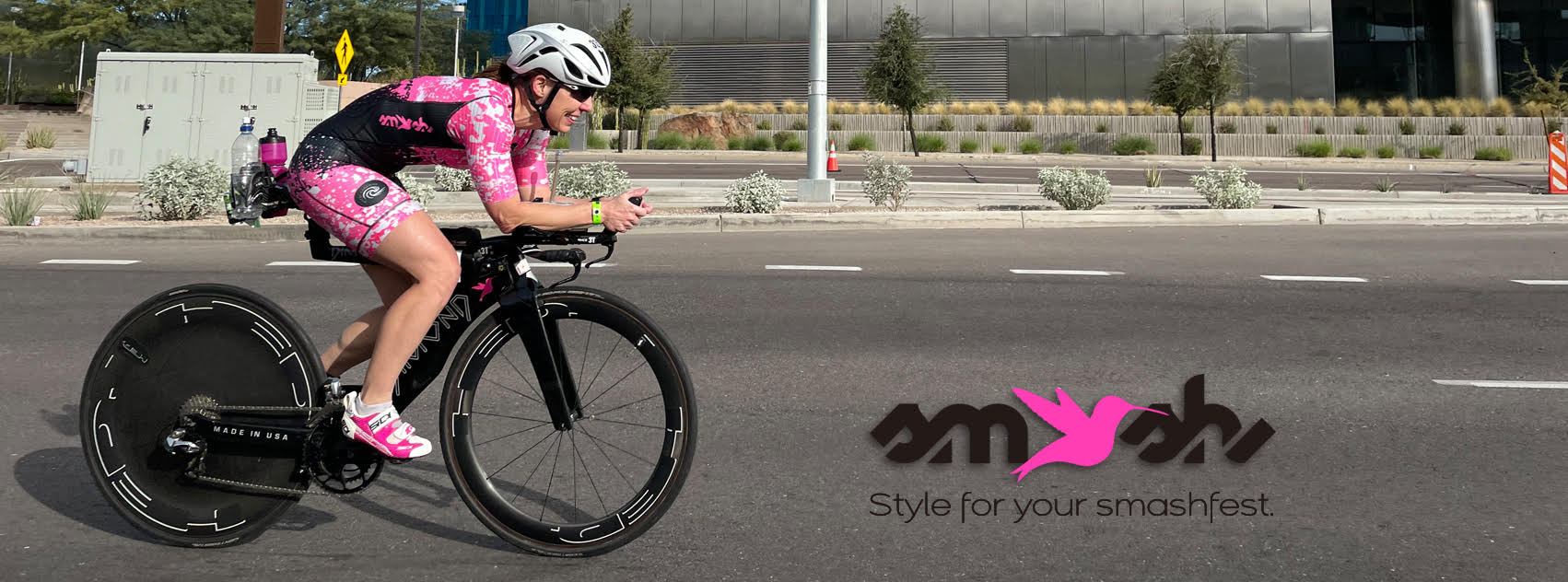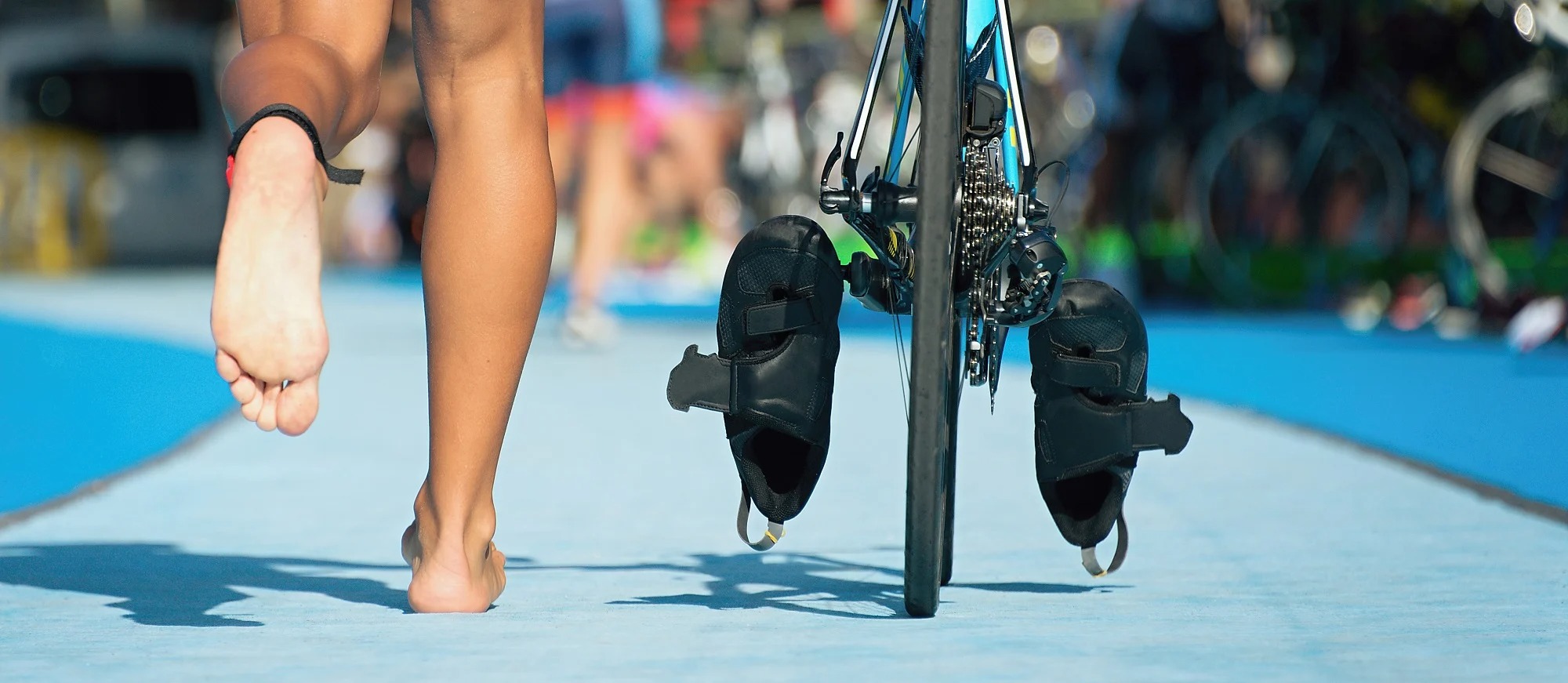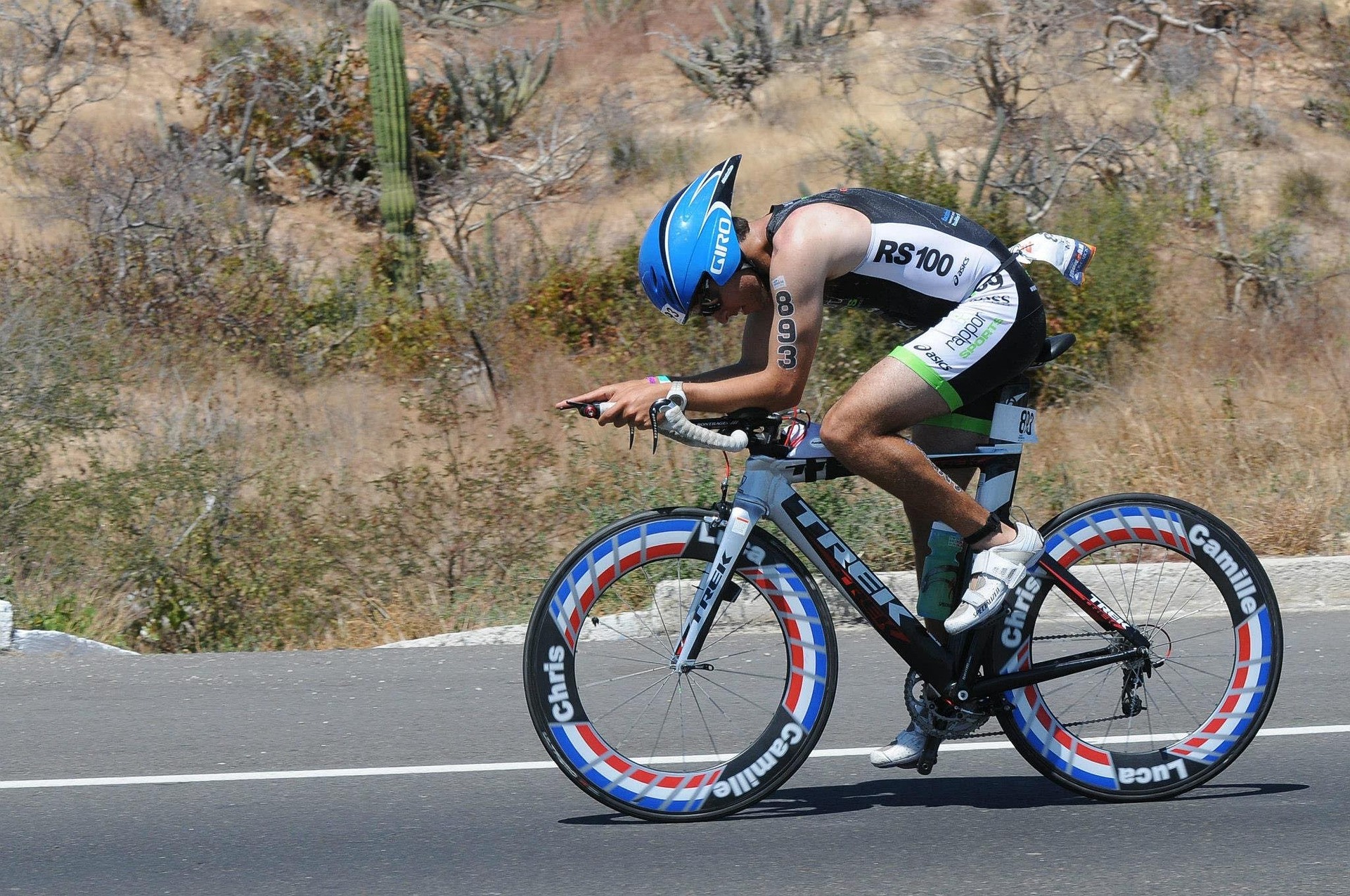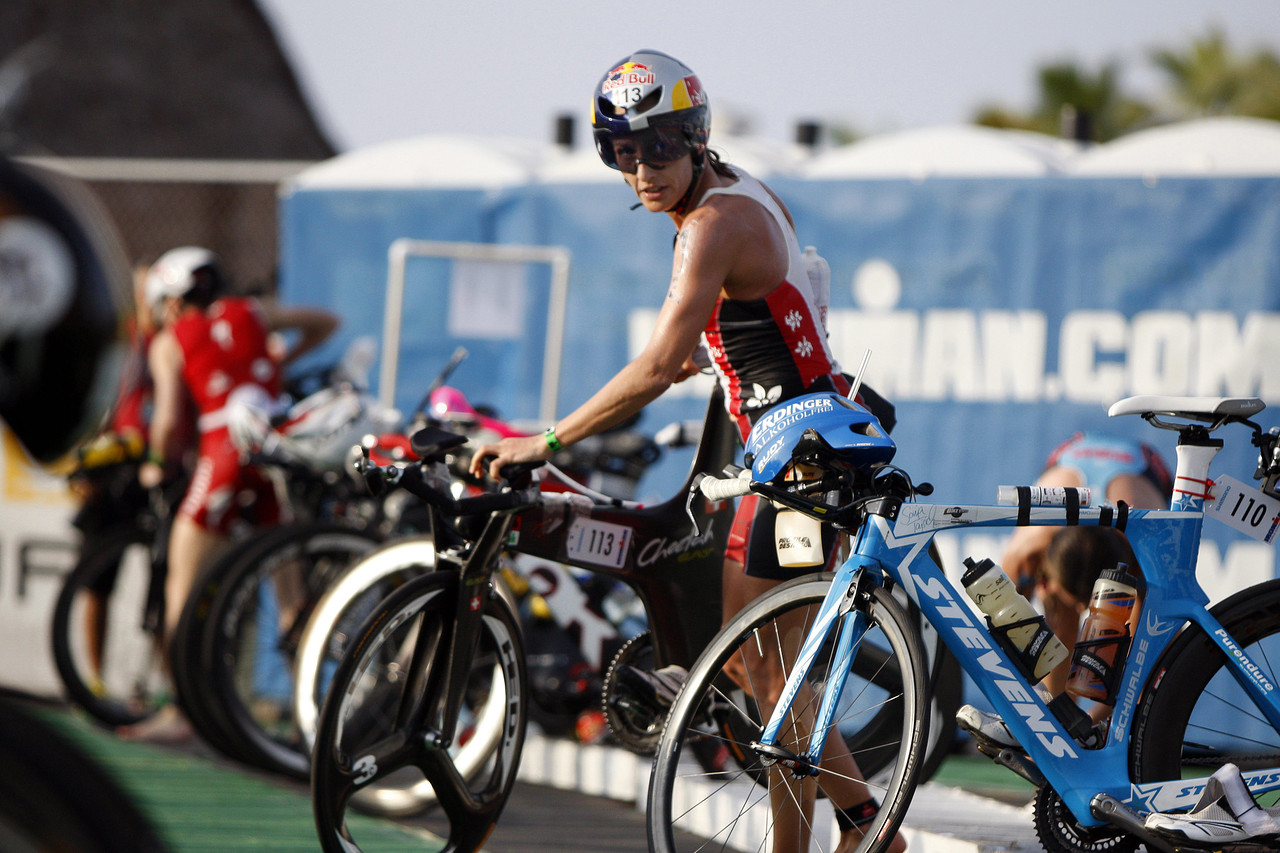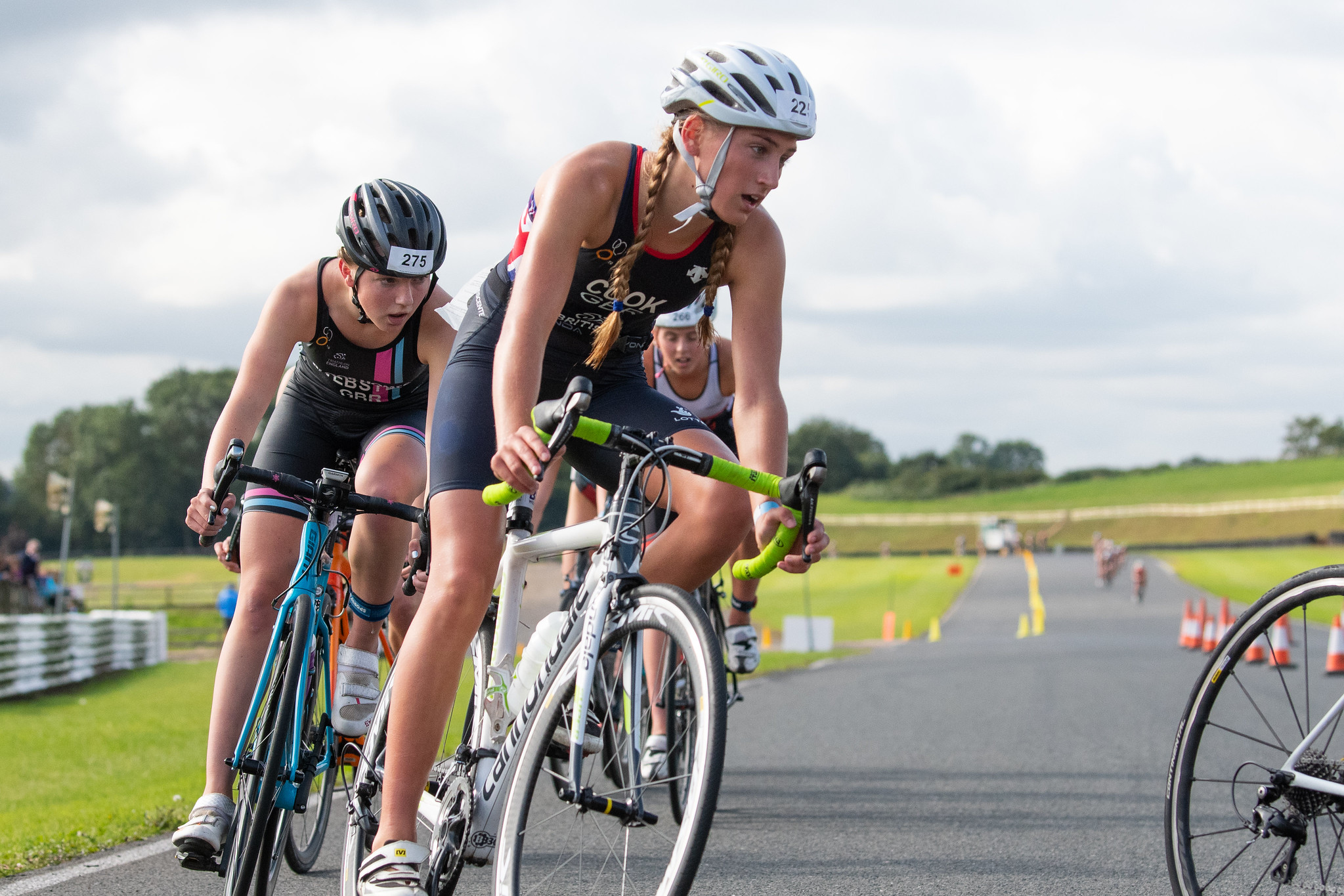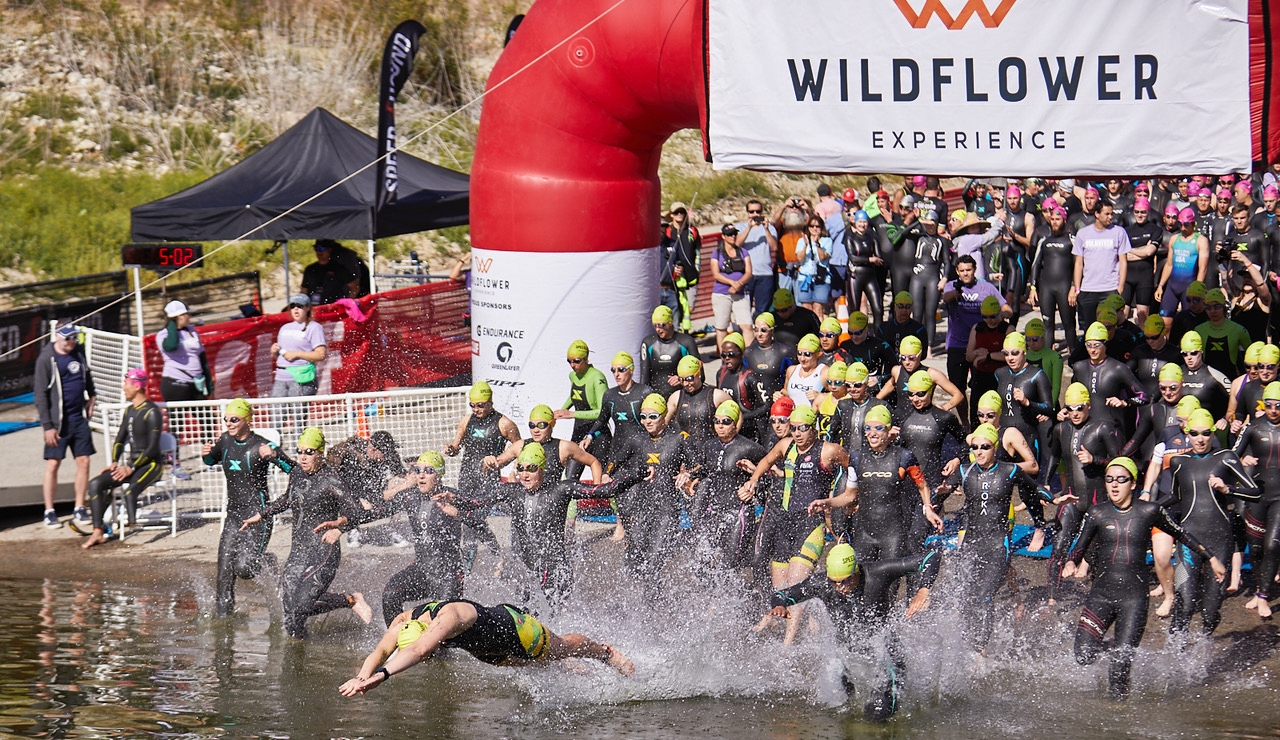Home>Misc>Featured>What Causes Leg Cramps During Running Triathlon
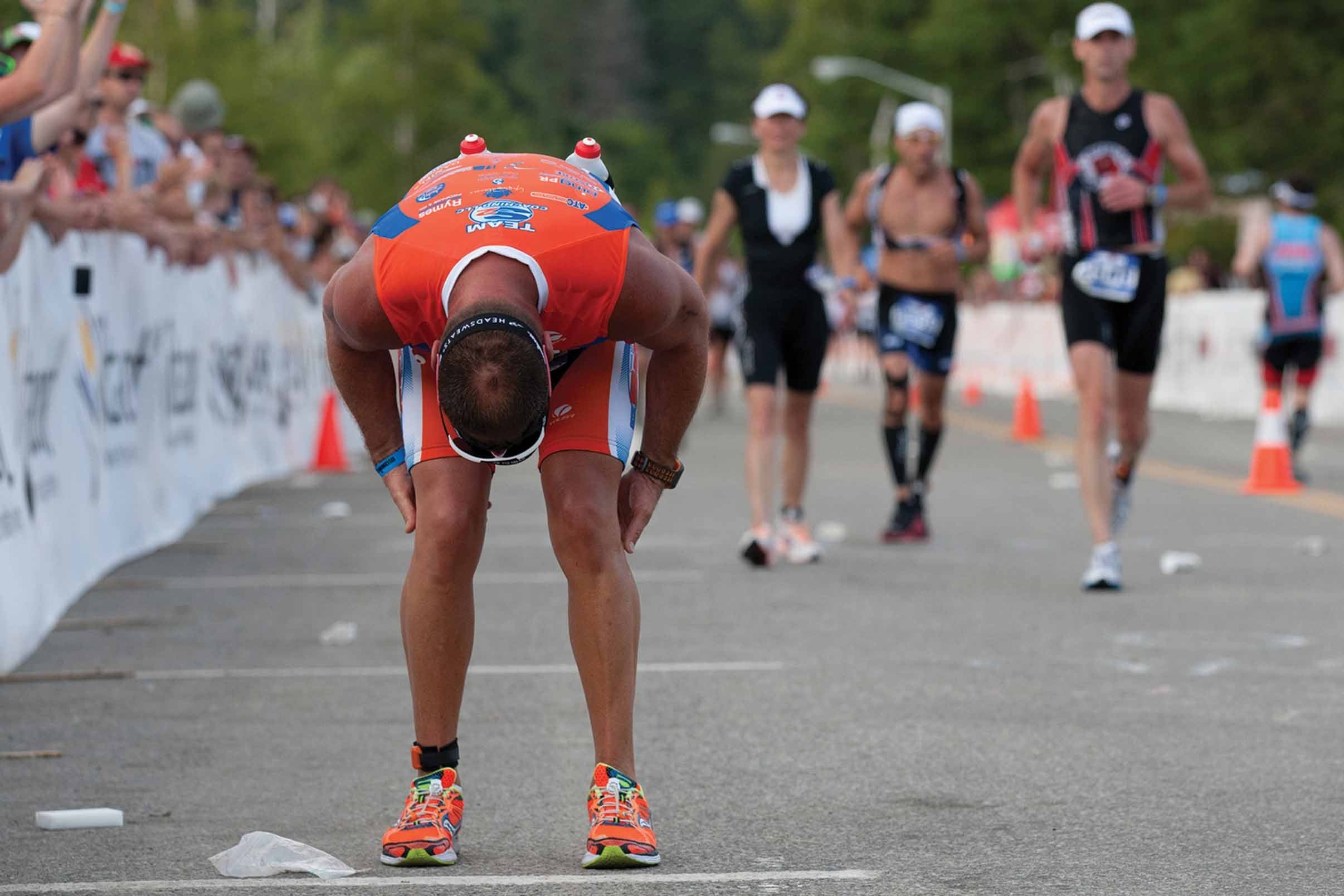

Featured
What Causes Leg Cramps During Running Triathlon
Modified: August 19, 2023
Discover the reasons behind leg cramps during running triathlons in this featured article. Gain insights on how to prevent and manage muscle cramps effectively.
Introduction
Running triathlons is a challenging and exhilarating athletic endeavor that pushes the limits of physical fitness and endurance. However, it is not uncommon for triathletes to experience leg cramps during their training sessions or races. These sudden painful contractions in the muscles can significantly hamper performance and cause discomfort.
In this article, we will delve into the causes of leg cramps specifically during running triathlons and explore various factors that contribute to their occurrence. Understanding these causes is crucial for both athletes and coaches to develop effective strategies for prevention and treatment.
Leg cramps, also known as muscle cramps or spasms, are involuntary contractions of muscles that can occur in any part of the body. However, for runners participating in triathlons, it is the legs that are most commonly affected. These cramps can range in intensity from mild twinges to sharp pain that hinders movement.
When it comes to running triathlons, there are several factors that can contribute to the occurrence of leg cramps. It is important to identify these causes and address them to minimize the risk of experiencing cramps and optimize performance on race day.
Throughout this article, we will explore the common causes of leg cramps during running triathlons, including dehydration and electrolyte imbalance, overuse and muscle fatigue, improper warm-up and stretching, poor nutrition and muscle imbalances, as well as potential underlying medical conditions. By understanding these causes, athletes and trainers can implement targeted prevention strategies to mitigate the occurrence of cramps during training and races.
Additionally, we will discuss effective methods to prevent leg cramps during running triathlons. This will include staying hydrated and maintaining electrolyte balance, incorporating proper training and conditioning techniques to prevent muscle fatigue, implementing appropriate warm-up and stretching practices, addressing nutritional needs to prevent muscle imbalances, and seeking medical advice for potential treatment options.
By the end of this article, you will have a comprehensive understanding of the causes of leg cramps during running triathlons and practical tips to prevent their occurrence. With this knowledge, you can ensure that your training and race experience is free from the discomfort and hindrance of leg cramps, enabling you to perform at your best.
Understanding leg cramps
Before we dive into the specific causes of leg cramps during running triathlons, it is essential to have a clear understanding of what exactly leg cramps are and how they occur.
Leg cramps, also known as muscle cramps or spasms, are sudden and involuntary contractions of one or more muscles in the leg. These contractions can range from mild twinges to intense pain that can temporarily disable an athlete. Leg cramps typically affect the calf muscles, but they can also occur in the hamstrings, quadriceps, and even the foot muscles.
The exact cause of leg cramps is not fully understood, but several factors are believed to contribute to their occurrence. The most prevalent theory suggests that leg cramps occur due to muscle fatigue and overactivity.
During intense physical activity, such as running in a triathlon, the muscles in the legs undergo significant stress and strain. This can lead to an imbalance between the nerve impulses that stimulate muscle contraction and relaxation. As a result, the muscles may contract and remain contracted, resulting in a cramp.
One common misconception about leg cramps is that they are caused by a lack of hydration or electrolyte imbalance. While dehydration and electrolyte abnormalities can contribute to muscle cramps in some cases, they are not the sole cause. In fact, research suggests that factors such as muscle fatigue, inadequate warm-up, poor stretching, and even muscle imbalances are more significant contributors to leg cramps during physical activity.
Leg cramps can occur both during training sessions and in actual race situations. They may occur sporadically, with no obvious pattern, or they may recur consistently in certain individuals. This unpredictability can make it challenging for athletes to address and prevent leg cramps effectively.
Now that we have a basic understanding of what leg cramps are and how they occur, we can delve deeper into the specific causes of leg cramps during running triathlons. By gaining a more comprehensive knowledge of these causes, we can formulate targeted strategies for prevention and alleviate the risk of experiencing leg cramps during training and races.
Common causes of leg cramps during running triathlon
Leg cramps during running triathlons can be attributed to various factors, ranging from physical exertion to nutritional deficiencies. Understanding these common causes is crucial for athletes and coaches to develop effective prevention strategies. Let’s explore the main culprits behind leg cramps during running triathlons:
1. Dehydration and electrolyte imbalance: Inadequate hydration and electrolyte imbalances can increase the risk of leg cramps. When you sweat excessively during intense physical activity like running, your body loses water and electrolytes, such as sodium, potassium, and magnesium. These electrolytes play a vital role in muscle contraction and relaxation. If their levels become imbalanced, it can lead to muscle spasms and cramps.
2. Overuse and muscle fatigue: Pushing your muscles beyond their limits, especially during endurance events like triathlons, can result in muscle fatigue and subsequent cramping. Continuous and repetitive contractions without enough time for rest and recovery can cause the muscles to become fatigued. Fatigued muscles are more prone to spasms and cramps during physical activity.
3. Improper warm-up and inadequate stretching: Neglecting to warm up properly before running or failing to stretch adequately can increase the likelihood of leg cramps. Warm-up exercises increase blood flow to the muscles, making them more flexible and less prone to tightening up. Stretching, particularly targeting the leg muscles, helps to maintain their suppleness and reduces the risk of cramps.
4. Poor nutrition and muscle imbalances: Proper nutrition is vital for optimal muscle function. Insufficient intake of essential nutrients such as calcium, magnesium, and potassium can contribute to muscle cramps. Additionally, imbalances between opposing muscle groups can cause certain muscles to become overworked, leading to cramping.
5. Medical conditions: In some cases, leg cramps during running triathlons may be a symptom of an underlying medical condition. Conditions such as peripheral artery disease, nerve compression, or metabolic disorders can increase the likelihood of experiencing cramps. If cramps persist or are severe, it is advisable to consult a medical professional for accurate diagnosis and appropriate treatment.
By identifying these common causes, triathletes can take proactive steps to minimize the occurrence of leg cramps during running. The next sections will delve into preventive measures that can help athletes stay ahead of leg cramps and enhance their performance on race day.
Dehydration and Electrolyte Imbalance as Contributing Factors
Dehydration and electrolyte imbalance are significant contributors to leg cramps during running triathlons. When the body loses water and essential electrolytes through sweat, the balance necessary for proper muscle function can be disrupted. Let’s delve into how dehydration and electrolyte imbalance contribute to leg cramps:
1. Dehydration: Sweat is the body’s natural cooling mechanism during physical activity. However, excessive sweating can lead to dehydration, which occurs when the body loses more fluid than it takes in. Dehydration affects the volume and composition of blood, reducing its ability to deliver oxygen and nutrients to the muscles efficiently. This can result in muscle cramps, as well as a decrease in overall performance. Proper hydration is crucial before, during, and after running triathlons to prevent dehydration-related leg cramps.
2. Electrolyte Imbalance: Electrolytes are minerals found in the body that help regulate fluid balance, muscle function, and nerve transmission. The most important electrolytes for muscle function are sodium, potassium, calcium, and magnesium. During intense exercise, these electrolytes can be lost through sweat. If electrolytes are not adequately replenished, it can disrupt the delicate balance required for muscle contraction and relaxation, leading to leg cramps. It is important to ensure that electrolyte levels are maintained through proper hydration and consuming electrolyte-rich foods or supplements.
To prevent leg cramps related to dehydration and electrolyte imbalance during running triathlons, it is essential to adopt the following measures:
1. Hydrate properly: Drink sufficient water before, during, and after training sessions and races to maintain fluid balance. The American College of Sports Medicine recommends drinking about 17 to 20 ounces of water two hours before exercise and continuing to hydrate with regular sips throughout the activity.
2. Consume electrolytes: Along with water, replenish electrolytes lost through sweat by consuming sports drinks or electrolyte-rich foods. These can help maintain the necessary balance of sodium, potassium, calcium, and magnesium in the body. Electrolyte supplements can also be an option, especially during longer endurance events.
3. Monitor urine color: Use the color of your urine as a general indicator of hydration. Clear or pale yellow urine suggests adequate hydration, while darker urine indicates the need for more fluids. Aim for light-colored urine to ensure proper hydration.
4. Practice salt and fluid loading: Some athletes may benefit from salt and fluid loading strategies before longer endurance events to boost hydration and electrolyte balance. This involves increasing sodium and fluid intake in the days leading up to the race. However, it is essential to consult with a sports nutritionist or healthcare provider to determine the appropriate approach for individual needs.
By prioritizing hydration and maintaining electrolyte balance, athletes can reduce the risk of leg cramps during running triathlons. Incorporating these practices into training and race day routines can enhance performance and overall enjoyment of the sport.
Overuse and Muscle Fatigue During Endurance Events
Endurance events, such as running triathlons, place significant demands on the muscles, often leading to overuse and muscle fatigue. These factors can contribute to the occurrence of leg cramps during the race. Let’s explore how overuse and muscle fatigue affect the likelihood of experiencing leg cramps:
1. Overuse: The repetitive and continuous movements involved in endurance events can lead to overuse injuries and muscle strain. When the same muscles are used repeatedly without adequate rest, they can become fatigued and more prone to cramping. It’s important to gradually increase training intensity and mileage to allow the muscles to adapt and prevent overuse.
2. Muscle Fatigue: Prolonged physical activity puts a strain on the muscles, and as the race progresses, fatigue sets in. Fatigued muscles are more likely to undergo involuntary contractions, resulting in leg cramps. Muscle fatigue can be caused by a combination of factors, including the depletion of energy stores, the accumulation of metabolic byproducts, and the reduced ability of the muscles to contract efficiently.
To prevent leg cramps related to overuse and muscle fatigue during endurance events, athletes can adopt the following strategies:
1. Gradual training progression: Gradually increase training volume and intensity to allow the muscles to adapt. This approach helps prevent overuse injuries and reduces the risk of muscle fatigue and cramping.
2. Rest and recovery: Incorporate rest days into your training schedule to allow your muscles time to recover. Adequate rest is crucial for muscle repair and rebuilding, preventing both overuse injuries and the onset of muscle fatigue.
3. Cross-training: Engage in activities other than running to work different muscle groups and reduce the risk of overuse. Cross-training can include activities such as cycling, swimming, or strength training. This variety helps to prevent muscle imbalances and overuse injuries.
4. Proper nutrition: Ensure a balanced diet with adequate nutrient intake, including carbohydrates for energy, proteins for muscle repair, and healthy fats for overall performance. Proper nutrition supports muscle recovery and prevents muscle fatigue.
5. Listen to your body: Pay attention to any warning signs of muscle fatigue or overuse. If you experience any early signs of cramping or fatigue during training or races, slow down, stretch, and refuel if necessary. Ignoring these signals can lead to more severe muscle cramps and potential injuries.
By implementing these strategies, athletes can minimize overuse injuries and reduce the risk of leg cramps during endurance events. Remember, a balanced approach to training, rest, and nutrition is crucial for maintaining optimal performance and preventing muscle fatigue in running triathlons.
Improper Warm-up and Inadequate Stretching
Proper warm-up and stretching routines are essential components of a well-rounded training program, especially for athletes participating in running triathlons. Neglecting these aspects can increase the risk of leg cramps during training sessions or races. Let’s explore how improper warm-up and inadequate stretching contribute to leg cramps:
1. Insufficient warm-up: Failing to warm up properly before running triathlons can lead to muscle stiffness and decreased flexibility. A thorough warm-up routine helps increase blood flow to the muscles, which in turn raises their temperature and prepares them for the physical demands of the race. Without a proper warm-up, the muscles are more prone to cramping and potential injury during intense activity.
2. Lack of stretching: Stretching plays a crucial role in maintaining muscle flexibility and preventing muscle imbalances. Tight muscles can cause abnormal movement patterns and uneven muscle loading, increasing the risk of muscle fatigue and cramps. Neglecting to stretch before running triathlons can lead to muscle tightness, limiting range of motion and making the legs more susceptible to cramps.
To prevent leg cramps related to improper warm-up and inadequate stretching, athletes can incorporate the following practices into their routine:
1. Dynamic warm-up: Start your training sessions or races with a dynamic warm-up routine. This involves performing movements that mimic the actions you’ll be doing during the race, gradually increasing the intensity. Jogging, high knees, butt kicks, and leg swings are examples of dynamic warm-up exercises that help increase blood flow, loosen up the muscles, and prepare them for activity.
2. Prioritize key muscles: Focus on stretching the key muscles involved in running and cycling, such as the calf muscles, quadriceps, hamstrings, and hip flexors. Hold each stretch for at least 30 seconds, ensuring a gentle and controlled stretch without bouncing. Regular stretching helps improve flexibility, maintain muscle balance, and reduce the risk of cramps.
3. Incorporate foam rolling: In addition to stretching, using a foam roller can help release muscle tension and improve flexibility. Roll over the targeted muscles, applying gentle pressure to release any knots or tight spots. Foam rolling can be particularly beneficial for breaking down adhesions and fascial restrictions that contribute to muscle tightness.
4. Proper cooldown: After completing your training session or race, allow time for a proper cooldown. This can include light jogging or brisk walking followed by static stretching. Cooling down gradually lowers your heart rate and helps prevent blood pooling in the legs, which can reduce the likelihood of post-exercise muscle cramps.
By incorporating a thorough warm-up routine, proper stretching techniques, and a cooldown into your training and racing practices, you can reduce the risk of leg cramps. Adequate warm-up and stretching not only prepare your muscles for the demands of running triathlons but also contribute to overall performance and help prevent injuries.
Poor Nutrition and Muscle Imbalances
Nutrition plays a vital role in overall athletic performance, including the prevention of leg cramps during running triathlons. Poor nutrition and inadequate nutrient intake can contribute to muscle imbalances, impair muscle function, and increase the risk of cramping. Let’s explore how poor nutrition and muscle imbalances can lead to leg cramps:
1. Inadequate nutrient intake: Muscles require a sufficient supply of nutrients to function optimally. Inadequate intake of essential nutrients such as calcium, magnesium, potassium, and sodium can contribute to muscle imbalances and increase the likelihood of cramps. These nutrients play a crucial role in muscle contraction and relaxation, and deficiencies can disrupt the intricate balance required for proper muscle function.
2. Poor hydration: Hydration is closely linked to nutrition, as both play a critical role in muscle performance. Dehydration, as discussed earlier, leads to an electrolyte imbalance, reducing the muscles’ ability to contract and relax efficiently. Without proper hydration, the risk of muscle cramps significantly increases.
3. Muscle imbalances: Muscle imbalances occur when certain muscles are consistently stronger or tighter than their opposing muscles. For example, tight calf muscles and weak shin muscles can create a muscular imbalance, increasing the likelihood of calf cramps. Imbalances can arise from inadequate strength training, improper form, repetitive movement patterns, or neglecting certain muscle groups during training.
To prevent leg cramps related to poor nutrition and muscle imbalances, athletes can implement the following strategies:
1. Balanced diet: Ensure a well-balanced diet that includes a variety of nutrient-dense foods. Focus on consuming adequate amounts of calcium, magnesium, potassium, and sodium. Calcium-rich foods include dairy products, leafy greens, and fortified plant-based alternatives. Magnesium can be found in nuts, seeds, leafy greens, and whole grains. Potassium-rich sources include bananas, oranges, avocados, and potatoes. Sodium can be replenished through electrolyte-rich foods or sports drinks.
2. Hydration: Stay consistently hydrated before, during, and after training sessions and races. Drink water and electrolyte-rich beverages to replenish fluid and electrolyte levels. Use urine color as an indicator of hydration status, aiming for a light-yellow color.
3. Strength training: Incorporate strength training exercises that target muscle imbalances and promote overall muscle balance. Focus on exercises that strengthen weaker muscle groups and stretch tight muscles. Consulting with a strength and conditioning specialist or sports therapist can be beneficial for designing a well-rounded strength training program.
4. Stretching and flexibility exercises: Regular stretching and flexibility exercises help maintain muscle length and prevent imbalances. Pay particular attention to muscles that are typically tight or prone to cramping, such as the calf muscles, quadriceps, hamstrings, and hip flexors. Incorporate stretching into your warm-up, cooldown, and post-exercise routine.
By prioritizing proper nutrition, hydration, and addressing muscle imbalances, athletes can minimize the risk of leg cramps during running triathlons. A well-nourished body with balanced muscle strength and flexibility is better equipped to handle the physical demands of training and racing, optimizing performance and reducing the occurrence of cramps.
Medical Conditions That Can Lead to Leg Cramps
While leg cramps during running triathlons are often attributed to factors such as dehydration, muscle fatigue, and improper stretching, it is important to recognize that certain medical conditions can contribute to the occurrence of leg cramps as well. Understanding these underlying conditions is crucial for appropriate diagnosis and treatment. Let’s explore some common medical conditions that can lead to leg cramps:
1. Peripheral artery disease (PAD): PAD is a condition characterized by the narrowin>g of blood vessels, typically in the legs. Due to reduced blood flow, the muscles may not receive an adequate supply of oxygen and nutrients, leading to cramping and pain during physical activity. Individuals with PAD may experience leg cramps that are relieved by rest and worsen with exercise.
2. Nerve compression: Nerves in the legs can become compressed or pinched due to various factors, such as herniated discs or entrapment syndromes like sciatica. When nerves are compressed, the signals between the brain and muscles can become disrupted, leading to muscle cramps and spasms. Leg cramps caused by nerve compression often occur in specific areas and may be accompanied by other symptoms like tingling or numbness.
3. Metabolic disorders: Certain metabolic disorders, such as diabetes, hypothyroidism, and electrolyte abnormalities, can increase the risk of leg cramps. These disorders can disrupt the balance of essential minerals and electrolytes in the body, impairing muscle function. Effective management of these conditions, including medication and lifestyle modifications, can mitigate the occurrence of leg cramps.
4. Muscle conditions: Some muscle conditions can lead to persistent or recurrent leg cramps. Conditions such as muscle strains, muscle fatigue syndrome, fibromyalgia, and certain muscular dystrophies can make muscles more susceptible to cramping during exertion. Proper evaluation and management by a healthcare professional with expertise in muscle disorders is essential for individuals with these conditions.
5. Medications: Certain medications can cause leg cramps as a side effect. These may include diuretics, beta blockers, statins, and certain medications used to manage mental health conditions. If you experience leg cramps that coincide with starting a new medication, it is important to consult with your healthcare provider to discuss potential alternatives or adjustments.
If you experience persistent or severe leg cramps during running triathlons, it is essential to consult with a healthcare professional for an accurate diagnosis and appropriate treatment. Based on the underlying condition, treatment options may include medication adjustments, physical therapy, lifestyle modifications, or targeted interventions to address the specific cause of the leg cramps.
It is important to note that while medical conditions can contribute to leg cramps, they are not the most common causes in most athletes. Proper evaluation and consultation with a healthcare professional are necessary to determine if an underlying medical condition is contributing to the leg cramps and to develop a comprehensive treatment plan tailored to the individual’s needs.
Preventing Leg Cramps During Running Triathlon
Preventing leg cramps during running triathlons requires a multifaceted approach that focuses on various aspects of training, nutrition, and overall health. By implementing the following strategies, athletes can reduce the risk of leg cramps and optimize their performance on race day:
1. Staying hydrated and maintaining electrolyte balance: Adequate hydration is crucial for preventing leg cramps. Drink water regularly throughout the day and during training sessions. Additionally, replenish electrolytes lost through sweat by consuming electrolyte-rich beverages or foods. This helps maintain the necessary balance of sodium, potassium, magnesium, and calcium in the body, which are essential for muscle function.
2. Training and conditioning to prevent muscle fatigue: Gradually increase training volume and intensity to allow the muscles to adapt and reduce the risk of muscle fatigue. Incorporate cross-training activities to work different muscle groups and prevent overuse injuries. Prioritize rest and recovery days to give your muscles time to heal and rebuild.
3. Proper warm-up and stretching techniques: Always start your training sessions and races with a dynamic warm-up routine to increase blood flow to the muscles and prepare them for activity. Incorporate static stretching after your warm-up and at the end of your training sessions to maintain muscle flexibility and prevent muscle imbalances. Target key muscle groups, such as the calves, quadriceps, hamstrings, and hip flexors.
4. Balancing diet and addressing muscle imbalances: Maintain a well-balanced diet that includes adequate protein, carbohydrates, and healthy fats to support muscle recovery and function. Avoid nutritional deficiencies by consuming a variety of nutrient-dense foods. Additionally, incorporate strength training exercises to address muscle imbalances and maintain overall muscle balance.
5. Seeking medical advice and treatment options: If you experience persistent or severe leg cramps during running triathlons despite preventive measures, it is essential to consult with a healthcare professional. They can evaluate your condition, determine if there are any underlying medical issues contributing to the cramps, and provide appropriate treatment options.
By implementing these preventive measures, athletes can minimize the occurrence of leg cramps and optimize their performance during running triathlons. It is important to remember that each individual is unique, and finding the right combination of strategies may require some trial and error. Listen to your body, stay proactive in your training and nutrition, and seek professional guidance when needed.
Staying Hydrated and Maintaining Electrolyte Balance
Staying properly hydrated and maintaining a balanced electrolyte level is crucial for preventing leg cramps during running triathlons. Dehydration and electrolyte imbalances can disrupt muscle function, leading to an increased risk of cramping. Let’s explore the importance of hydration and electrolyte balance and how you can incorporate these practices into your training and race day routines:
1. Hydration: Adequate hydration is essential for overall athletic performance and the prevention of leg cramps. Dehydration can occur when the body loses more fluids through sweat and respiration than it takes in. When dehydration sets in, blood volume decreases, impairing nutrient delivery to the muscles and hindering their ability to function optimally. To combat dehydration, drink water consistently throughout the day, especially before, during, and after training sessions and races.
2. Electrolyte balance: Electrolytes are minerals that play a crucial role in muscle contractions, nerve impulse transmission, and fluid balance in the body. The primary electrolytes relevant to muscle function are sodium, potassium, magnesium, and calcium. During intense physical activity like running triathlons, these electrolytes are lost through sweat. To maintain electrolyte balance, consume foods and beverages rich in these minerals or consider using electrolyte supplements or sports drinks. A balanced electrolyte level ensures proper muscle contraction and helps prevent cramping.
To ensure adequate hydration and electrolyte balance during running triathlons, you can implement the following strategies:
1. Pre-hydration: Start your training sessions or races well-hydrated by consuming water a few hours before exercise. This allows your body to absorb and distribute fluids appropriately.
2. Hydration during exercise: Drink water regularly during training sessions and races, aiming for small sips every 15-20 minutes. This helps maintain fluid balance and prevents dehydration. If you are participating in longer endurance events, consider incorporating electrolyte-rich beverages or sports drinks to replenish both fluids and electrolytes lost through sweat.
3. Monitor urine color: Urine color can be a useful indicator of hydration status. Aim for light-colored urine, which suggests proper hydration. Darker urine may indicate dehydration and the need for increased fluid intake.
4. Electrolyte-rich foods and supplements: Consume a balanced diet that includes foods rich in electrolytes, such as bananas (potassium), nuts and seeds (magnesium), dairy products or fortified plant-based alternatives (calcium), and green leafy vegetables (calcium and magnesium). Additionally, you can consider electrolyte supplements or sports drinks that contain a balanced blend of electrolytes to replenish those lost during intense physical activity.
5. Post-race recovery: Replace fluids and electrolytes after training sessions and races to aid in the recovery process. Drinking a combination of water and electrolyte-rich fluids can help restore hydration and electrolyte balance more effectively.
Remember that individual hydration needs can vary, so it is essential to listen to your body and adjust your fluid and electrolyte intake accordingly. Factors such as climate, duration of exercise, and individual sweat rate should be taken into account when determining your hydration strategy.
By staying hydrated and maintaining electrolyte balance, you can minimize the risk of leg cramps during running triathlons. Proper hydration and electrolyte levels contribute to overall muscle function, energy levels, and performance, allowing you to perform at your best and prevent the discomfort of cramping.
Training and Conditioning to Prevent Muscle Fatigue
Training and conditioning play a key role in preventing muscle fatigue, which can lead to leg cramps during running triathlons. By following effective training principles and implementing conditioning techniques, athletes can improve endurance, minimize muscle fatigue, and decrease the likelihood of experiencing cramps. Let’s explore how training and conditioning can help prevent muscle fatigue:
1. Gradual progression: It is essential to gradually increase training intensity, duration, and volume over time. By slowly and progressively challenging your muscles, you allow them to adapt and become stronger without excessive strain. A balanced training regimen helps prevent overuse injuries and reduces the risk of muscle fatigue and cramping during runs.
2. Endurance training: Incorporate specific endurance training into your routine to build stamina and resistance to fatigue. Focus on gradually increasing your mileage and training for longer periods without experiencing excessive exhaustion. By developing endurance, your muscles become more efficient at utilizing energy, reducing the likelihood of cramping due to muscle fatigue.
3. Strength training: A well-rounded strength training program can help prevent muscle fatigue and imbalances, reducing the risk of leg cramps. Strength exercises targeting the major muscle groups used in running, such as the quadriceps, hamstrings, calves, and core muscles, helps enhance muscle power and endurance. Stronger muscles are better equipped to handle the physical demands of running triathlons and are less prone to fatigue-related cramps.
4. Cross-training: Incorporate cross-training activities into your routine to work different muscle groups and reduce the risk of overuse injuries. Engaging in activities such as swimming, cycling, or strength training on non-running days can improve overall fitness, enhance muscle balance, and reduce the repetitive stress on specific muscle groups.
5. Rest and recovery: Adequate rest and recovery periods are crucial for allowing the muscles to repair and rebuild. When you push your body too hard without providing sufficient rest, the risk of muscle fatigue and cramping increases. Allow for rest days in your training schedule and prioritize quality sleep to optimize muscle recovery and reduce the risk of fatigue-related cramps.
6. Proper nutrition: Proper nutrition is essential for optimal muscle function and energy production. Ensure you are consuming a balanced diet that provides sufficient calories, carbohydrates, proteins, and healthy fats. Adequate nutrition supports muscle recovery, reduces the risk of muscle fatigue, and provides the energy needed to perform at your best during running triathlons.
By incorporating these training and conditioning strategies into your routine, you can improve your muscle endurance, minimize muscle fatigue, and decrease the likelihood of experiencing leg cramps during running triathlons. Remember to listen to your body, adjust training intensity as needed, and consult with a coach or trainer for personalized guidance.
Proper Warm-up and Stretching Techniques
Proper warm-up and stretching techniques are essential for preventing leg cramps during running triathlons. A well-executed warm-up routine helps prepare the body for physical activity by increasing blood flow and muscle temperature, while effective stretching helps improve flexibility and reduce the risk of muscle imbalances. Let’s explore the importance of proper warm-up and stretching techniques and how to incorporate them into your training and race day routines:
1. Dynamic Warm-up: Begin your training sessions and races with a dynamic warm-up routine. Dynamic warm-up exercises involve performing movements that mimic the actions you’ll be doing during the race, gradually increasing the intensity. This can include exercises such as jogging, high knees, butt kicks, leg swings, and lunges. Dynamic warm-up helps raise your body temperature, increase blood flow, and activate the muscles needed for running triathlons.
2. Cardiovascular Exercise: Incorporate five to ten minutes of light cardiovascular exercise, such as jogging or cycling, into your warm-up routine. This helps elevate your heart rate and further increases blood flow to the muscles, preparing them for the upcoming activity.
3. Muscle-Specific Stretches: Following the warm-up, perform static stretches targeting the major muscle groups used in running triathlons. Focus on stretching the calves, quadriceps, hamstrings, hip flexors, and glutes. Hold each stretch for 15-30 seconds, breathing deeply and focusing on relaxing the muscles. Do not bounce while stretching, as this can lead to injury. Stretch both sides of your body equally to maintain muscle balance.
4. Stretching Techniques: There are various stretching techniques that can be employed to improve flexibility and reduce the risk of leg cramps. These include:
- Static Stretching: This involves stretching a muscle to its comfortable limit and holding the position without moving. It can help improve flexibility and reduce muscle tension.
- PNF Stretching: Proprioceptive Neuromuscular Facilitation (PNF) stretching involves a combination of contraction and relaxation phases. This technique is typically performed with a partner or using resistance and can help improve range of motion.
- Active Isolated Stretching: Active Isolated Stretching (AIS) involves holding a stretch for only 1-2 seconds and repeating it multiple times. This technique aims to prevent muscle contraction and improve flexibility.
- Dynamic Stretching: Dynamic stretching involves moving a joint through its full range of motion, using controlled movements and increasing the intensity gradually. It helps warm up the muscles and improve flexibility.
5. Post-Exercise Stretching: After completing your training session or race, it is beneficial to perform post-exercise stretching to aid in muscle recovery and prevent muscle tightness. Focus on gentle, static stretches for the major muscle groups used during the activity.
By incorporating proper warm-up and stretching techniques into your training and race day routines, you can improve flexibility, enhance muscle performance, and reduce the risk of leg cramps. Remember to tailor your warm-up and stretching routine to your specific needs and adjust accordingly based on the intensity and duration of your activity. Consult with a coach or trainer for personalized guidance and to ensure you are performing the stretches correctly.
Balancing Diet and Addressing Muscle Imbalances
A balanced diet and addressing muscle imbalances are important aspects of preventing leg cramps during running triathlons. Proper nutrition supports muscle function and recovery, while addressing muscle imbalances helps maintain optimal muscle performance. Let’s explore the significance of diet and muscle balance and how to incorporate these practices into your training and race day routines:
1. Balanced Diet: Maintaining a well-balanced diet is crucial for overall health and muscle function. Include a variety of nutrient-dense foods in your meals to ensure you are getting an adequate intake of macronutrients and micronutrients. Focus on:
- Protein: Consuming sufficient protein helps support muscle repair and growth. Include lean meats, poultry, fish, beans, legumes, dairy products, or plant-based protein sources in your diet.
- Carbohydrates: Carbohydrates are the primary source of fuel for endurance activities. Choose complex carbohydrates such as whole grains, fruits, vegetables, and legumes to provide sustained energy during training and races.
- Healthy Fats: Include sources of healthy fats such as nuts, seeds, avocados, and fatty fish. Healthy fats aid in nutrient absorption and provide additional energy.
- Hydration: Stay adequately hydrated by drinking water regularly throughout the day. Proper hydration supports optimal muscle function and helps prevent cramping.
2. Muscle Imbalances: Muscle imbalances occur when certain muscles are disproportionately stronger or weaker compared to their opposing muscles. Imbalances can increase the risk of overuse injuries and cramping during running triathlons. To address muscle imbalances:
- Strength Training: Incorporate strength training exercises into your routine to target specific muscle groups and improve overall muscle balance. Focus on exercises that strengthen weaker muscles and stretch tight muscles to restore balance and reduce the risk of cramps.
- Stretching and Flexibility: Regular stretching helps maintain muscle length, improve flexibility, and prevent imbalances. Prioritize stretching exercises that focus on the major muscle groups used in running, such as the calves, quadriceps, hamstrings, and hip flexors.
- Balance Exercises: Incorporate exercises that challenge your balance, such as single-leg squats or standing on an unstable surface. These exercises help enhance stability and proprioception, reducing the risk of imbalances and associated cramps.
- Professional Guidance: Seek the guidance of a coach, personal trainer, or physical therapist who can assess your muscle imbalances and develop a customized training plan to address them effectively.
By maintaining a balanced diet and addressing muscle imbalances, you can improve muscle function, reduce the risk of cramping, and optimize your performance during running triathlons. Remember to listen to your body, fuel it with proper nutrition, and incorporate strength training and stretching exercises into your routine to create a balanced approach to your training and overall muscle health.
Seeking Medical Advice and Treatment Options
If you experience persistent or severe leg cramps during running triathlons despite preventive measures, it is important to seek medical advice. Consulting with a healthcare professional can help identify any underlying causes of the cramps and guide you towards appropriate treatment options. Let’s explore why seeking medical advice is crucial and the potential treatment options available:
1. Accurate Diagnosis: Leg cramps can have various causes, ranging from muscle fatigue and dehydration to underlying medical conditions. A healthcare professional can evaluate your symptoms, medical history, and lifestyle factors to determine if there are any underlying causes contributing to the leg cramps. Accurate diagnosis is crucial for effective treatment and prevention strategies.
2. Tailored Treatment: Depending on the underlying cause of the leg cramps, a healthcare professional can provide personalized treatment options. Treatment may involve addressing factors such as muscle imbalances, adjusting training routines, specific stretches, hydration strategies, or making dietary modifications. When medical conditions are present, appropriate management can be recommended to alleviate symptoms and reduce the occurrence of leg cramps.
3. Medication or Supplementation: In some cases, medication or supplementation may be recommended to manage leg cramps. This may include muscle relaxants, anti-inflammatory medications, or vitamin and mineral supplements. However, it is important to consult with a healthcare professional before starting any medication or supplementation regimen, as they can provide guidance on the appropriate options for your specific needs.
4. Physical Therapy: If muscle imbalances or movement dysfunctions contribute to your leg cramps, a physical therapist can develop a targeted exercise program to address these issues. Physical therapy can help improve muscle strength, flexibility, and coordination, reducing the risk of muscle fatigue and cramps during running triathlons.
5. Lifestyle Modifications: A healthcare professional can provide guidance on lifestyle modifications that may help alleviate leg cramps. This may include recommendations for optimal nutrition, hydration strategies, rest and recovery, and appropriate training techniques. Implementing these modifications can contribute to the prevention and management of leg cramps.
6. Further Investigation: In some cases, leg cramps may be a symptom of an underlying medical condition that requires further investigation. This may involve additional testing or referrals to specialists to assess and manage potential underlying causes such as peripheral artery disease, nerve compression, or metabolic disorders.
It is important to remember that seeking medical advice should be done at any persistent or severe leg cramps during running triathlons. A healthcare professional can provide accurate diagnosis, guide treatment options, and help you develop a personalized plan to prevent and manage leg cramps effectively. Through their expertise, you can work towards optimal performance and enjoyment of running triathlons without the hindrance of leg cramps.
Conclusion
Leg cramps can be a frustrating and painful occurrence for runners participating in triathlons. However, by understanding the common causes and implementing preventive measures, athletes can minimize the risk of leg cramps and optimize their performance. Throughout this article, we explored various factors that contribute to leg cramps during running triathlons, including dehydration and electrolyte imbalance, overuse and muscle fatigue, improper warm-up and stretching, poor nutrition, muscle imbalances, and underlying medical conditions.
To prevent leg cramps during running triathlons, it is crucial to prioritize hydration and maintain electrolyte balance. Adequate hydration and replenishing electrolytes lost through sweat help ensure optimal muscle function and prevent cramping. Additionally, proper training and conditioning techniques contribute to reducing muscle fatigue and the risk of cramps. Gradual progression, endurance training, strength training, cross-training, and sufficient rest and recovery play vital roles in keeping muscles strong, resilient, and less prone to fatigue.
Moreover, incorporating a proper warm-up routine and performing appropriate stretching techniques can enhance muscle flexibility, improve range of motion, and minimize the likelihood of cramps. Addressing nutritional needs, maintaining a balanced diet, and addressing muscle imbalances help optimize muscle performance and prevent the onset of cramps. Lastly, seeking medical advice when needed is essential for identifying any underlying medical conditions and determining appropriate treatment options.
By implementing these preventive measures and adapting them to individual needs, athletes can significantly reduce the occurrence of leg cramps during running triathlons. However, it is important to remember that every athlete is unique, and finding the right combination of strategies may require some experimentation and adjustments. Always listen to your body, consult with professionals when needed, and prioritize your overall health and well-being.
